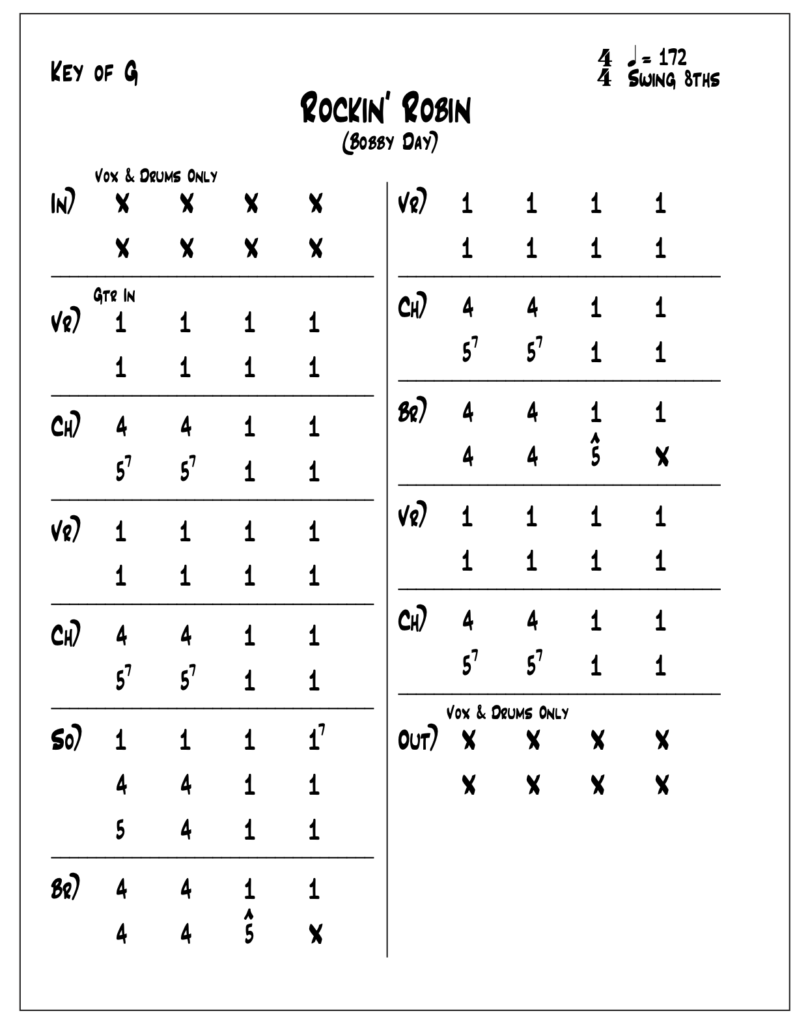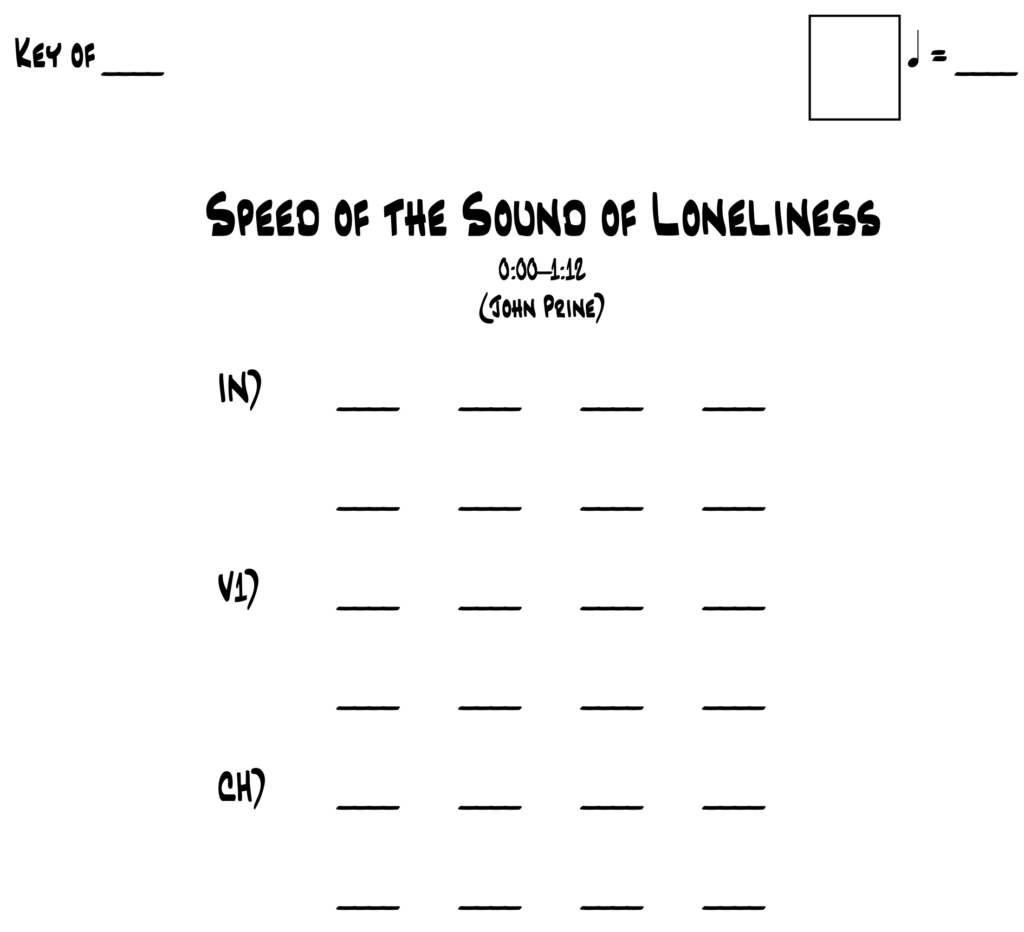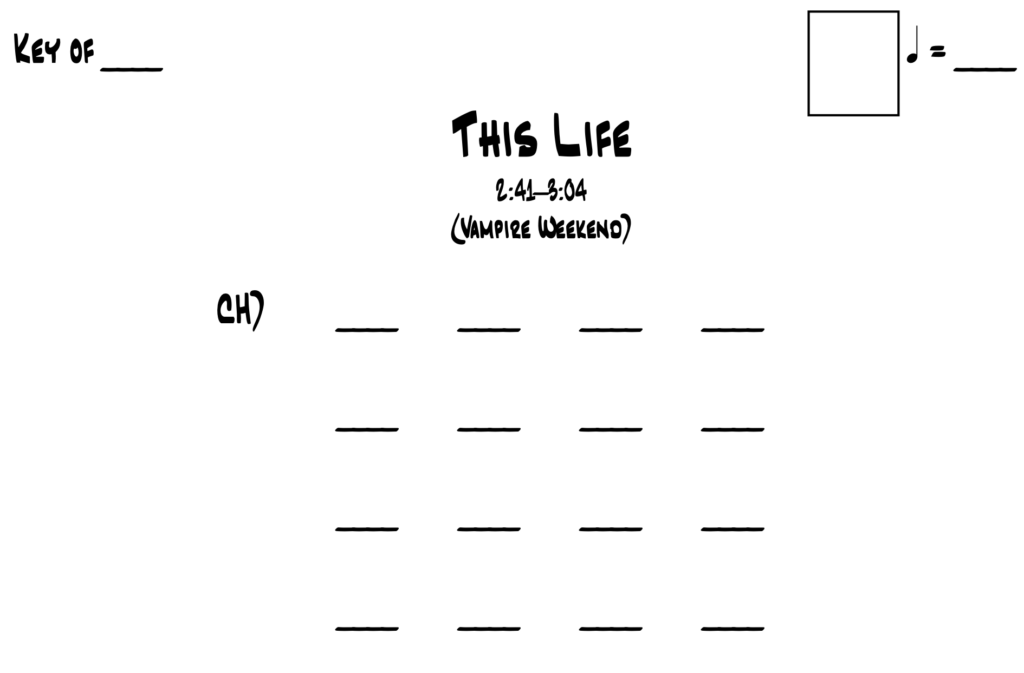Main Body
15 Nashville numbers
Learning goals for Chapter 15
In this chapter, we will learn:
- How to read a Nashville number chart
- How to use the Nashville Number System (NNS) for analysis and transcription
- How to create a Nashville number chart
The (NNS) was developed in the 1950s as an easy means of communicating a song’s harmonic structure on a single piece of paper, which commercial musicians use in performance settings and recording studios. We will learn about NNS here as a valuable alternative to Roman numeral labeling for chords, especially in popular music. Like Roman numerals, Nashville numbers are a relative system, but they use Arabic numbers (rather than Roman numerals) to represent the scale degrees upon which each chord is built. Unlike lead sheet symbols, Nashville numbers allow for easy transposition to any key.
Because it is contained on a single sheet of paper, a Nashville number chart also shows us a song’s form in its entirety, with section labels on the left side of the chart. We will explore this aspect of Nashville number charts when we study form in popular music in Chapter 37.
Example 15-1 shows an example of a Nashville number chart. At the top, it provides all of the basic information about the song—its key, meter, tempo, title, and songwriter. The chart shows each section, labeled with abbreviations, and the chord progression denoted in Arabic numbers that represent the scale degree upon which each chord is built. The “x” symbols indicate places where no chord is used. Arabic numbers with no modification, like “1” and “4” here, simply indicate the major tonic and major subdominant triads. The use of the superscript “7” indicates a major-minor seventh chord, so the “57” symbol means the dominant seventh chord. If the song is performed in the key of G major, the “1” indicates the G major triad, the “4” indicates the C major triad, and the “57” indicates D7 (the D major-minor seventh chord).
The default is one chord per bar, unless notated otherwise using slashes to show more frequent chord changes. For example,
1 4 5 1/5
would mean to play the tonic, subdominant, and dominant chords for one measure each, then the tonic and dominant chords for half a measure each.
Example 15-1. De Clerq’s Nashville number chart of “Rockin’ Robin” (Bobby Day, 1958)[1]
Chord qualities other than major triads and major-minor seventh chords are indicated with additional symbols. For minor chords, the symbol is the Arabic number with a “-” following it. For example, “2-” would indicate a minor supertonic triad. Major seventh chords are typically indicated with either a “maj7” or “![]() 7” suffix, and minor seventh chords are indicated with a “-7” suffix.
7” suffix, and minor seventh chords are indicated with a “-7” suffix.
Inverted chords are easily shown in the Nashville Number System using fraction-like symbols, in which the top number refers to the scale degree of the chord and the bottom number refers to the note. For example, in the key of G major, the symbol “![]() ” would mean a G major chord with B in the bass (first inversion).
” would mean a G major chord with B in the bass (first inversion).
Songs in minor keys are often notated with symbols associated with the relative major key, naming the relative major as tonic instead of the minor key. In this case, the minor tonic chord would be written as “6-” rather than “1-”.
EXERCISE 15-1 Creating a Nashville number chart
For each of the following audio examples, create a Nashville number chart by filling in the Arabic numbers corresponding with the scale degrees of each chord root. Blanks are provided for you to help you determine the . In the blanks at the top of each chart, add the key, time signature, and tempo marking to the best of your ability. Use your aural skills and an instrument, like a piano or guitar, to help you figure out the harmonic structure of each example.
Blank Nashville number chart for Worksheet example 15-1:
Worksheet example 15-1. John Prine, “Speed of the Sound of Loneliness,” 0:00–1:12
Listen to the first minute and 12 seconds of this track on Spotify or YouTube.
Learn about the American singer-songwriter John Prine (1946–2020) by reading this Oxford Music Online article, written by Ken Tucker and revised by Art Menius.
Blank Nashville number chart for Worksheet example 15-2:
Worksheet example 15-2. Vampire Weekend, “This Life,” 2:41–3:04
Access a printer-friendly .pdf of the exercise here: Ex15.1 Creating a Nashville number chart
Listen to the audio examples featured in this exercise here: Spotify playlist for Nashville numbers
Further reading
De Clercq, Trevor. 2019. “The Nashville Number System: A Framework for Teaching Harmony in Popular Music.” Journal of Music Theory Pedagogy 33: 3–28. https://www.midside.com/publications/declercq_2019_jmtp.pdf
Matthews, Neal Jr. 1984. The Nashville Numbering System: An Aid to Playing by Ear. 2nd ed. Milwaukee, WI: Hal Leonard Corporation.
Williams, Chas. 2017. The Nashville Number System. 11th ed. Nashville, TN: Chas Williams.
Wood, Jim. 2010. “The Nashville Number System.” Fiddler Magazine 17, no. 2: 30–33.
- Trevor De Clercq, “The Nashville Number System: A Framework for Teaching Harmony in Popular Music,” Journal of Music Theory Pedagogy 33 (2019): 5. Used with the permission of the author. ↵
system for labeling chord progressions, using Arabic numbers and symbols to show chord function and alterations
the rate of chord change
the fundamental note from which a chord is built
with regard to chords, the lowest sounding note of a particular chord; with regard to voices, the lowest voice part notated in bass clef



